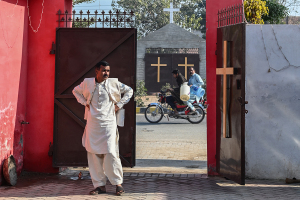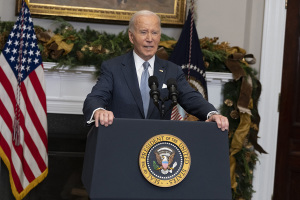Top 1% Got 95% of Income Gains in Obama's First Term
Income inequality has been expanding, with almost all, 95 percent, of the income gains going to the top one percent in income during President Barack Obama's first term, 2009 to 2012, according to a new report by University of California at Berkeley researcher Emmanuel Saez.
Average income grew 6 percent, with most of those gains, 4.6 percent, in the last two years, 2011 to 2012. Those gains, though, "were very uneven," wrote Saez, professor of economics and director of the Center for Equitable Growth. The top one percent in income grew 31.4 percent while the bottom 99 percent grew only 0.4 percent. "Hence, the top 1% captured 95% of the income gains in the first three years of the recovery."
For comparison, Saez says that income inequality is at it highest level since the 1920's, just before the Great Depression.
"The share of the top decile is around 45 percent from the mid-1920s to 1940," he wrote. "It declines substantially to just above 32.5 percent in four years during World War II and stays fairly stable around 33 percent until the 1970s. ... After decades of stability in the post-war period, the top decile share has increased dramatically over the last twenty-five years and has now regained its pre-war level. Indeed, the top decile share in 2012 is equal to 50.4 percent, a level higher than any other year since 1917 and even surpasses 1928, the peak of stock market bubble in the 'roaring' 1920s."
In a new book, Average is Over: Powering America Beyond the Age of the Great Stagnation, economist Tyler Cowen argues that due to technological and global changes, high levels of income inequality should be expected for the foreseeable future. In a Thursday interview on NPR, Cowen says that rather than talking about the "top one percent," we will more likely be talking about a top 15 percent who are talented, hard working and highly successful along with a large, struggling, lower middle class.
"It will be a very strange world, I think. We will be returning to historical levels of inequality. We'll view post-war America as a kind of strange interlude not to be repeated. It won't be the dreams that we all had that virtually all incomes go up in lockstep at three percent a year. It hurts to give that up. It will mean some very real increases in economic fragility for a lot of people," said Cowen, professor of economics at George Mason University.
Economists have different views on what, if anything, can be done from a public policy standpoint about income inequality. Conservatives typically argue that a robust economy provides the best opportunities for those who are struggling to gain wealth. Saez shares the view, common among liberals, that inequality can, and should, be flattened by wealth redistribution policies, such as increasing tax rates on the wealthy.
"Looking further ahead, based on the US historical record, falls in income concentration due to economic downturns are temporary unless drastic regulation and tax policy changes are implemented and prevent income concentration from bouncing back," he wrote.
John B. Taylor, professor of economics at Stanford University, looked at Saez's data and argued, in an op-ed for The Wall Street Journal, that it suggests the need for education reforms, such as school choice, that provide greater access to high quality education for those on the lower rungs of the economic ladder.
Rising income inequality in the 1980's and 1990's came from the fact that the incomes of the well-educated outpaced those with a high school diploma or less, he claimed.
"Greater economic freedom, the key policy trend of the 1980s and 1990s, did not spread to large parts of the education system," Taylor wrote. "That remains true today, although increased accountability and freedom to choose schools in some states such as Florida and Texas shows what can and should be done.
"The policies favored by those with a middle-out view – higher tax rates, more intrusive regulations, more targeted fiscal policies – will not revive the economy. More likely they will perpetuate the weak economy we have and cause real incomes – including for those in the middle – to continue to stagnate."





























